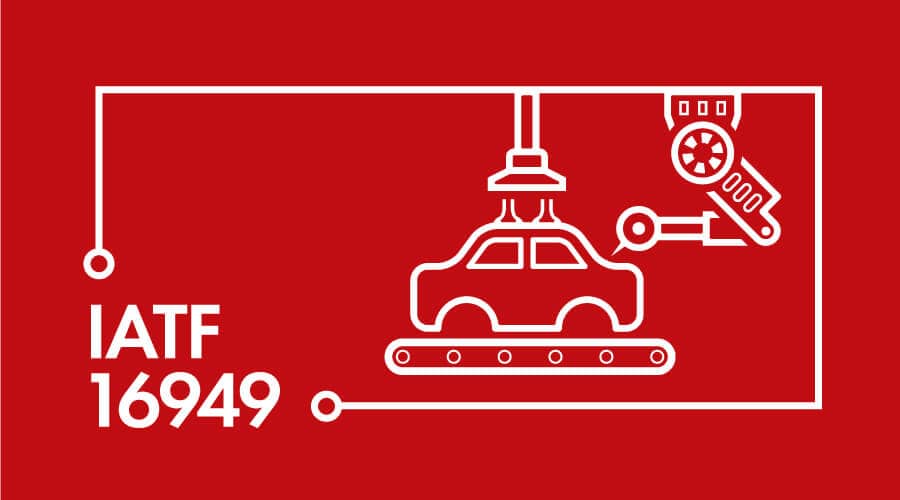IATF 16949: Understanding the Standard for Automotive Quality Management Systems
In the automotive industry, ensuring the highest levels of quality in products and processes is crucial. To achieve this goal, the International Automotive Task Force (IATF) developed a specific quality management standard known as IATF 16949. This standard aims to establish a common language and framework for automotive manufacturers and suppliers to meet customer requirements, improve efficiency, reduce waste, and minimize risk. In this article, we will discuss what IATF 16949 is, its benefits, and how to implement it in your organization.
What is IATF 16949?
IATF 16949 is a quality management standard designed for the automotive industry. It was developed by the IATF in conjunction with ISO (International Organization for Standardization) to harmonize the requirements of automotive manufacturers worldwide. This standard provides a framework for implementing a quality management system (QMS) that meets the specific needs of the automotive industry. It is based on the ISO 9001 standard but includes additional requirements and specific automotive industry-related clauses.
Why is IATF 16949 important?
IATF 16949 is critical for automotive manufacturers and suppliers because it establishes a set of requirements that must be met to achieve quality excellence. By adopting this standard, organizations can improve their product and process quality, increase customer satisfaction, and reduce waste and costs. IATF 16949 also helps companies to demonstrate their commitment to quality and continuous improvement to customers, stakeholders, and regulatory bodies.
Benefits of IATF 16949
The benefits of implementing IATF 16949 are numerous. Some of these benefits include:
1. Enhanced customer satisfaction
IATF 16949 helps companies to meet customer requirements, enhance product quality, and reduce defects and complaints, leading to increased customer satisfaction.
2. Improved efficiency and productivity
By implementing IATF 16949, organizations can improve their processes, reduce waste and rework, and increase efficiency and productivity.
3. Cost savings
IATF 16949 helps organizations to identify and eliminate non-value-added activities, reduce defects and scrap, and minimize the cost of poor quality.
4. Reduced risk
IATF 16949 includes specific requirements for risk management, helping organizations to identify and mitigate risks to their business, customers, and stakeholders.
5. Competitive advantage
By adopting IATF 16949, organizations can differentiate themselves from their competitors and demonstrate their commitment to quality and continuous improvement.
How to implement IATF 16949
Implementing IATF 16949 requires a significant commitment from the organization’s leadership and employees. The following are the key steps involved in implementing IATF 16949:
1. Understand the standard
Before implementing IATF 16949, organizations must understand the requirements of the standard and how it applies to their business. This includes identifying gaps in their existing quality management system and developing a plan to address these gaps.
2. Establish a quality policy
Organizations must establish a quality policy that outlines their commitment to meeting customer requirements, improving product and process quality, and continuous improvement.
3. Develop a quality manual
A quality manual provides a framework for implementing IATF 16949 and should include a description of the organization’s quality management system, processes, and procedures.
4. Identify and document processes
Organizations must identify and document their processes and procedures to ensure they meet the requirements of IATF 16949. This includes developing process maps, work instructions, and control plans.
5. Implement the quality management system
Organizations must implement their quality management system and ensure that is effective in meeting the requirements of IATF 16949. This involves training employees, establishing communication channels, and ensuring that the quality management system is integrated into all business processes.
6. Monitor and measure performance
Organizations must monitor and measure their performance against the requirements of IATF 16949. This includes conducting internal audits, tracking key performance indicators, and reviewing customer feedback.
7. Continual improvement
Continuous improvement is a core principle of IATF 16949. Organizations must establish processes for identifying opportunities for improvement, implementing corrective actions, and monitoring the effectiveness of these actions.
Conclusion
IATF 16949 is a quality management standard developed specifically for the automotive industry. By implementing this standard, organizations can improve their product and process quality, increase customer satisfaction, reduce waste and costs, and demonstrate their commitment to quality and continuous improvement. Implementing IATF 16949 requires a significant commitment from the organization’s leadership and employees, but the benefits of doing so are numerous.
FAQs
- .Q. Is IATF 16949 mandatory for automotive manufacturers and suppliers?
- A. While IATF 16949 is not mandatory, it is widely recognized in the automotive industry as the standard for quality management systems.
- Q. How long does it take to implement IATF 16949?
- A. The time it takes to implement IATF 16949 varies depending on the size and complexity of the organization. On average, it can take anywhere from six months to two years to implement.
- Q. What are the key differences between IATF 16949 and ISO 9001?
- A. IATF 16949 includes additional requirements and specific automotive industry-related clauses that are not included in ISO 9001.
- Q. How often is recertification required for IATF 16949?
- A. Organizations must undergo a recertification audit every three years to maintain their certification to IATF 16949.
- Q. Can organizations combine IATF 16949 with other management system standards?
- A. Yes, IATF 16949 can be integrated with other management system standards, such as ISO 14001 (environmental management) and ISO 45001 (occupational health and safety management).
